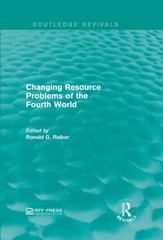Question
As the economy reopens after the third wave of COVID-19, growth should rebound strongly. The Bank is forecasting growth of about 6percent this year, slowing
As the economy reopens after the third wave of COVID-19, growth should rebound strongly. The Bank is forecasting growth of about 6percent this year, slowing to about 4 percent in 2022 and 3 percent in 2023.
"...Consumption is expected to continue to lead the recovery. Some of the sectors hit by lockdowns, including retail, restaurant, and other hard-to-distance sectors, are already seeing a rebound, while others, like business and international travel, may take longer to recover.
Employment should continue to rebound over the next few months as the reopening process continues. The job gains we saw in June are encouraging, particularly for workers in the service sector who bore the brunt of lockdowns. But to get back to the pre-pandemic employment rate, we still have more than 500,000 jobs to recoup. Our recent Business Outlook Survey showed that plans to hire staff are widespread as firms prepare for rising demandbut finding workers with the right skills can be difficult and will take time..."
"...At today's decision, the Governing Council judged that the recovery still needs extraordinary support from monetary policy. We remain committed to holding the policy interest rate at the effective lower bound until economic slack is absorbed so that the 2 percent inflation target is sustainably achieved. Based on our current projection, this happens sometime in the second half of 2022.
Our quantitative easing (QE) program continues to reinforce this commitment. We decided to adjust the program to a target of $2 billion weekly purchases of Government of Canada bonds, down from a target of $3 billion a week. This adjustment reflects continued progress towards recovery and the Bank's increased confidence in the strength of the Canadian economic outlook...."
Monetary Policy Report Press Conference Opening Statement
Opening statement
Tiff Macklem - Governor
Ottawa, Ontario
July 14, 2021
Monetary Policy Report - July 2021.pdf
https://www.bankofcanada.ca/wp-content/uploads/2021/07/mpr-2021-07-14.pdf
In my opinion, when the government conducts monetary policy, it is using policy tools to influence the cost of credit and availability in the economy. Mostly, it can change the federal funds rate to change the banks pay for overnight borrowing in the market. Those changes will influence other rates in turn to change households and business as well. When the interest rates go down, it becomes cheaper to borrow, and more families will like to buy goods and services.. The businesses are more likely to buy assets like property or equipment. It is more useful when high inflation is shown.
Fiscal policy is the use of government spending, taxation and transfer payments to influence aggregate demand. By adjusting its level of spending and tax revenue, the government can affect economic outcomes by either increasing or decreasing economic activity. All in all, with monetary policy and fiscal policy, the economy of Canada will shift into a higher gear.
Ref:https://www.rbccm.com/en/insights/story.page?dcr=templatedata/article/insights/data/2021/06/economic_recovery_shifts_into_higher_gear
Can someone reply share your opinion about my answers? I would appreciate for it
Step by Step Solution
There are 3 Steps involved in it
Step: 1

Get Instant Access to Expert-Tailored Solutions
See step-by-step solutions with expert insights and AI powered tools for academic success
Step: 2

Step: 3

Ace Your Homework with AI
Get the answers you need in no time with our AI-driven, step-by-step assistance
Get Started


